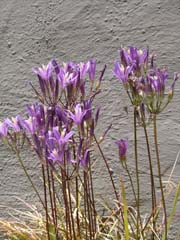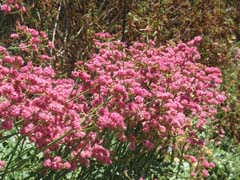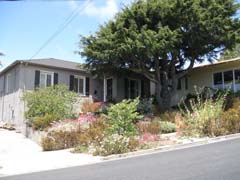
Dave Drummond’s garden
Richmond
Lot size: 2,100 sq. ft. front garden only on tour, 95% native
Garden Age: Native garden was planted in stages, beginning in 2004.
Years on the Bringing Back the Natives Garden Tour: New this year!
Showcase feature: Dave is the neighbor we all wish we had; affable, a good conversationalist—and a terrific gardener. Dave has provided plants, seeds, advice and inspiration to neighbors; this is why the Richmond Annex contains three Tour gardens within walking distance. In spring, Dave’s intensively planted garden (which he designed and installed) contains masses of the annual gilias and clarkias, which reseed themselves at will; in summer the garden features swaths of rosy buckwheat.

Other garden attractions:
- The yen for natives is spreading up and down the street! Don’t miss the neighbor’s parking strips Dave has planted; one is downhill from Dave’s, the other uphill.
- Dave, who has extensively studied the uses of plants by Native Americans of California, uses many of native plants as food. Clarkia and gilia seeds are baked in muffins and cornbread, and he roasts brodiaea bulbs. (“They taste a little like sweet potatoes,” says Dave.)

Gardening for Wildlife: Annuals are allowed to go to seed, which provides food and nesting material for wildlife. Little mulch is used, in order to provide habitat for ground-nesting native bees. The diversity of local natives has attracted fifteen species of native bees. On sunny days in summer hundreds of bumblebees can be seen at once, gathering pollen from the rosy buckwheats. Painted lady and anise swallowtail butterflies are commonly seen. Salamanders and garter snakes call this garden home.
Garden Talks: 12:00 “How to attract native bees to your garden“ by Rollin Coville, Insect Photographer
1:00 "Native American uses of California native plants" by Dave Drummond